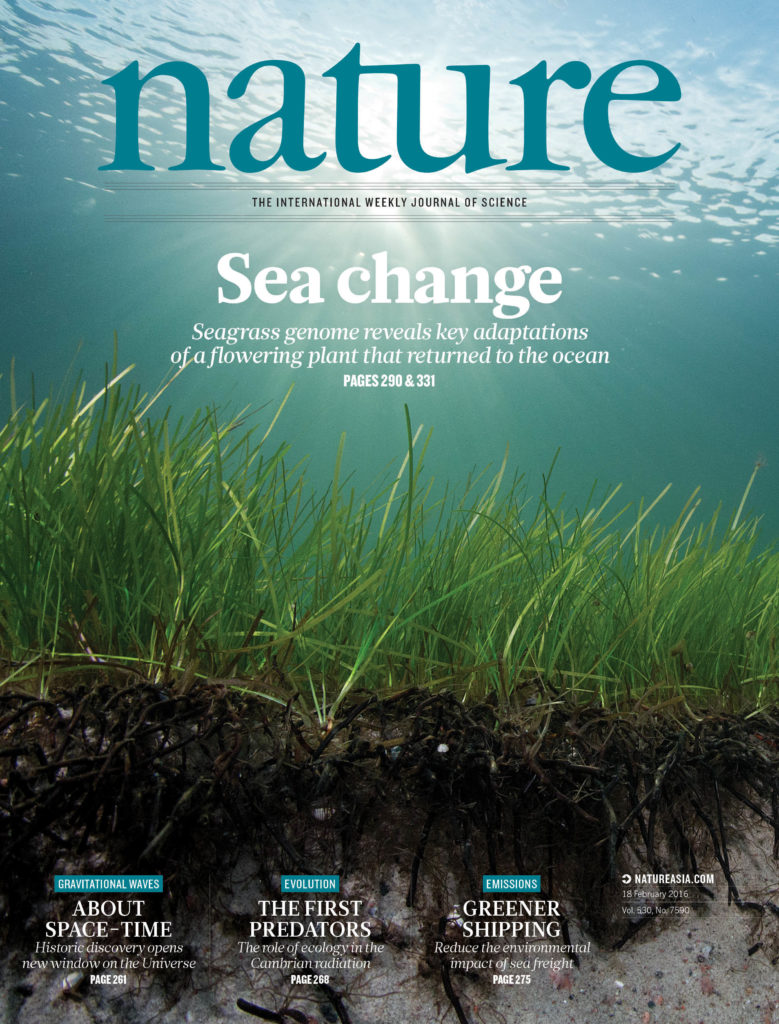Eelgrass might be the most important plant you’ve never heard of. Found in coastal waters throughout the northern hemisphere, it creates vast undersea “meadows” that provide essential habitat and food for marine life, including commercially important fish and shellfish. Like other green plants, eelgrass produces oxygen that we breathe. Eelgrass meadows also protect our coastal communities by softening the blow of waves and storms.
How does one plant do it all? Eelgrass may look like the green stuff on your lawn, but it’s actually a flowering plant, closely related to tulips! To understand how this former land plant colonized the sea, a team of scientists, including researchers from the University of Groningen in the Netherlands and the U.S. Department of Energy Joint Genome Institute, sequenced the eelgrass genome. You can watch a video about the eelgrass genome here, see the original scientific publication here, and learn more about the discoveries here. To inspire further research around the world, the team donated some of this valuable “reference” DNA to the OGL biorepository.

How can the eelgrass genome help our oceans and agriculture? Here at the Northeastern University Marine Science Center, Profs. Randall Hughes and Jon Grabowski study the impacts of climate change on sea grasses and their associated animal communities, respectively. The newly sequenced genome will help the Hughes lab develop new ways to measure eelgrass biodiversity, which could improve conservation and restoration efforts. Since eelgrass flourishes in saltwater while its relatives can’t, the eelgrass genome could also help scientists improve food crop yields in salty soils, a common problem of over-irrigated farmland.
The OGL biorepository is working with researchers around the globe to preserve and make available these valuable DNA samples that may someday lead to new developments in sustainable food and energy. If you would like to support our efforts, please consider making a gift.
